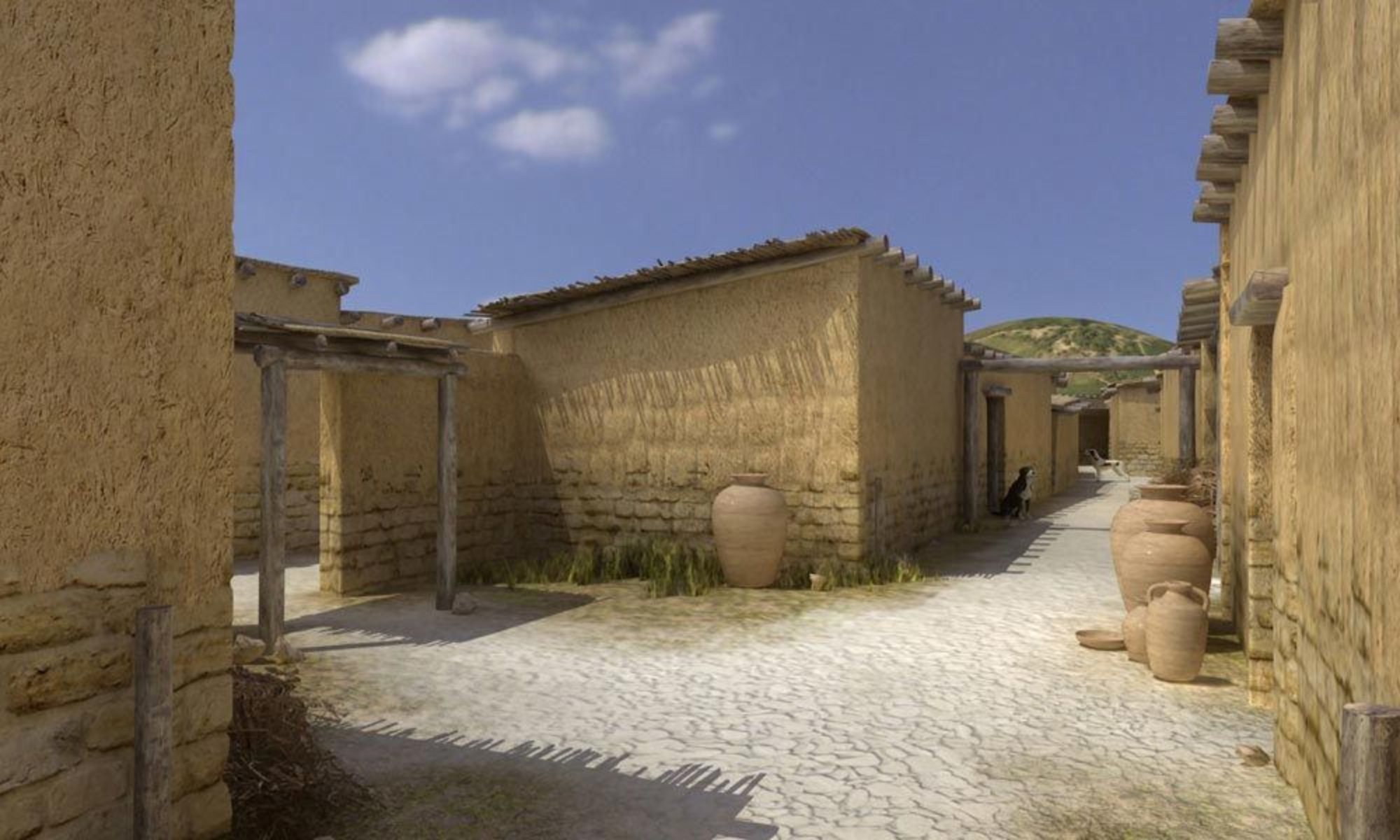
- Home
- The Gallic town
- The birth of the city and the rampart
- The 4th, 3rd and 2nd centuries BCE
The rampart ca. 350 BCE
After the rampart was partially repaired around 475 BCE, a major reconstruction project was launched around 450 BCE. The structure and the implementation of the curtain wall of this rampart were more consistent than the previous fortification on which it was erected. When it was completed, a single-thickness, dressed stone wall some 2.5 meters thick enclosed the town. Three construction campaigns were needed, lasting five or six decades in all. One of the original aspects of this project was the creation of redans, or salients, on the internal face of the enclosure. Gates P1 and P5 continued to be used. To the south, an access ramp to the top of the rampart's curtain wall was built. This reconstruction of the rampart was most likely part of a vast program of urban restructuring, which included the creation of a road network.The urban planning principles employed would structure life in the town until the end of the Iron Age. This turning part marked the end of the archaic town and definitively set the stage for the port city of the late Iron Age.
The rampart between 300 and 250 BCE
In the first half of the third century (300/250 BCE), the rampart continued to be strengthened – a series of square towers was built against the wall's interior. These constructions may indicate a close connection to Mediterranean models (such as (Ampurias, Marseille, Olbia, etc.).In Languedoc, settlements contemporary with Lattara are equipped with rounded towers.
The fore-wall between 300 and 250 BCE
During this period, the fore-wall continued to be maintained, and there was even a repair phase in the late second century BCE. This phase is connected with the initial development of the town's port and the first construction work connected with the extension of the town beyond the ramparts. It was at this time that a new gate (P4) was built in the fore-wall, thus connecting the new districts with the original town.
These successive stages indicate an ever-present concern for the solidity of the southern façade facing the coastal lagoon and, de facto, for the port that had become the town's major economic strength.





